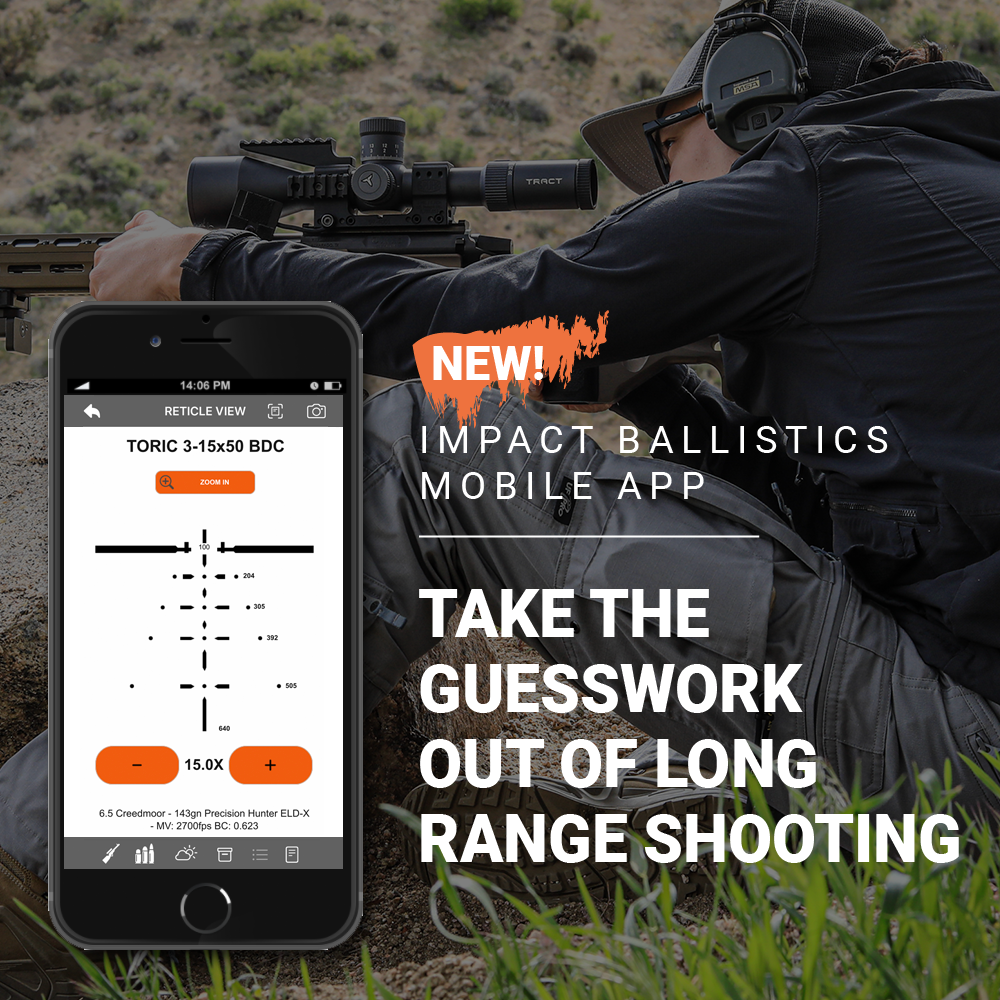Why You Might Consider a Ballistic Calculator
Save time, ammo, and money by using a ballistic calculator to dial your scope and shoot more consistently.
Ballistic calculators aren’t the newest technology in shooting sports. But this relatively underused tool can change the game during your time at the range or in the field. In the old days, shooters were required to calculate bullet drop and drift through a combination of mathematical equations and experience. Fast forward to the modern day. Contemporary marksmen and women can now access the same data complete with bullet drops and scope holdovers. The best part is that it's all with the push of a button.
What is a Ballistic Calculator?
Distance-shooters have long utilized a “DOPE Card” when preparing to take a shot. These cheat sheets are constructed and modified through experience – going to the range and slinging lead. After shooting a group, the shooter logs a bullet’s impact under various ranges, elevations, and winds and notates the number of clicks needed. The information is utilized like a quick reference guide for later reference when a similar shot is presented.
Ballistic calculators drastically shorten both the construction time and the time needed to modify a DOPE Card. A bullet and rifle’s ballistic information is entered into a computer program (or A mobile app), followed by external weather and elevation conditions. With the click of a button, a DOPE Card is created. Calculators made by scope manufactures will also show the exact holdover for each scope and each reticle, further shortening the process.
Why Use a Ballistic Calculator?
As in with all scenarios, there are pros and cons to using a ballistic calculator. To reach proficiency, shooters need to know exactly where a bullet will hit at various ranges. For example, a .308 sighted in at 100 yards will drop almost 4 inches at 200 yards and over a foot at 300 yards. If a shooter doesn’t fully understand where a bullet will impact over a variety of distances, a miss is all but guaranteed.
The primary advantage of using a ballistic calculator is how much it eliminates guesses. A shooter using the traditional DOPE method could need hundreds of rounds to be able to properly develop a card. Shooters using calculators are able to have a tremendous head start without firing a single shot, saving ammo, time, and money.
[caption id="attachment_2180" align="aligncenter" width="398"] Why You Might Consider a Ballistic Calculator[/caption]
Why You Might Consider a Ballistic Calculator[/caption]
Ballistic calculators won’t be extremely accurate however for every rifle. Ballistic performance varies from rifle to rifle, even when using the same ammunition. While factory ammunition has improved drastically over the past few decades, performance variances still occur in boxed ammo. As a result, a ballistic calculator should only be a starting point. A modified DOPE session should still be used to check and double check the calculator’s results.
Using a Ballistic Calculator
Since a ballistic calculator relies on data inputs, it’s critical to input accurate data. The primary information needed centers on rifle setup, cartridge performance and environmental factors.
The mount height of a scope is an important measurement that can cause variance in calculator input vs. actual rifle performance. While this may seem like a small detail, small differences can lead to big misses in precision shooting. Since a scope is mounted above the barrel instead of looking directly through the barrel, the calculator and any subsequent holds must compensate for the downward angle of the scope. Measure your mounted scope’s height from the middle of the scope’s tube perpendicular to the middle of the bore of the rifle. Use a tape measure, and don’t guesstimate.
Bullet velocity is another gray area for ballistic calculators. While ammunition boxes list a cartridge’s muzzle velocity, lots of things, such as barrel length, can cause the velocity of a round in your rifle to vary from the manufacturer’s stated velocity. A chronograph is a critical piece of equipment to verify your specific rifle’s performance.
[caption id="attachment_2179" align="aligncenter" width="434"] Ballistic Calculator[/caption]
Ballistic Calculator[/caption]
Entering the correct Muzzle Velocity is important to obtaining accurate ballistic data.
Environmental factors also play a part. Wind speed is an obvious influencer of bullet performance. Barometric pressure, air temperature, and humidity levels can also affect performance. Heavy, moist air can produce a significant amount of drag and friction on a bullet and can lessen velocity and increase drop. Similarly thinner air at higher elevations reduces drag as the bullet flies through thinner air with less dense molecules. Use a barometer and a wind meter for the most precise results.
Ballistic Calculator App
TRACT has developed the Impact Ballistics program, one of the most comprehensive, industry-leading ballistic calculators. This program is available as a desktop version or a mobile app. Pre-set with all of our scopes and reticles, shooters can visually see their holdovers without needing to read a chart. Environmental data and weather information is preloaded after geolocating the phone’s location. Additionally, a traditional DOPE Card can be printed from the site for shooters who will need to know yardages and holds beyond the reach of cell service. Backcountry hunters should consider printing an abbreviated dope card and taping it to the side of the gun’s stock or the inside of flip-up scope covers.
For those shooting beyond a couple hundred yards, knowing accurate holds is critical to making an accurate shot. Consider using a ballistic calculator to shorten the needed practice time and more quickly dial in on your intended target.
[caption id="attachment_1991" align="aligncenter" width="467"] Ballistic Calculator[/caption]
Ballistic Calculator[/caption]
